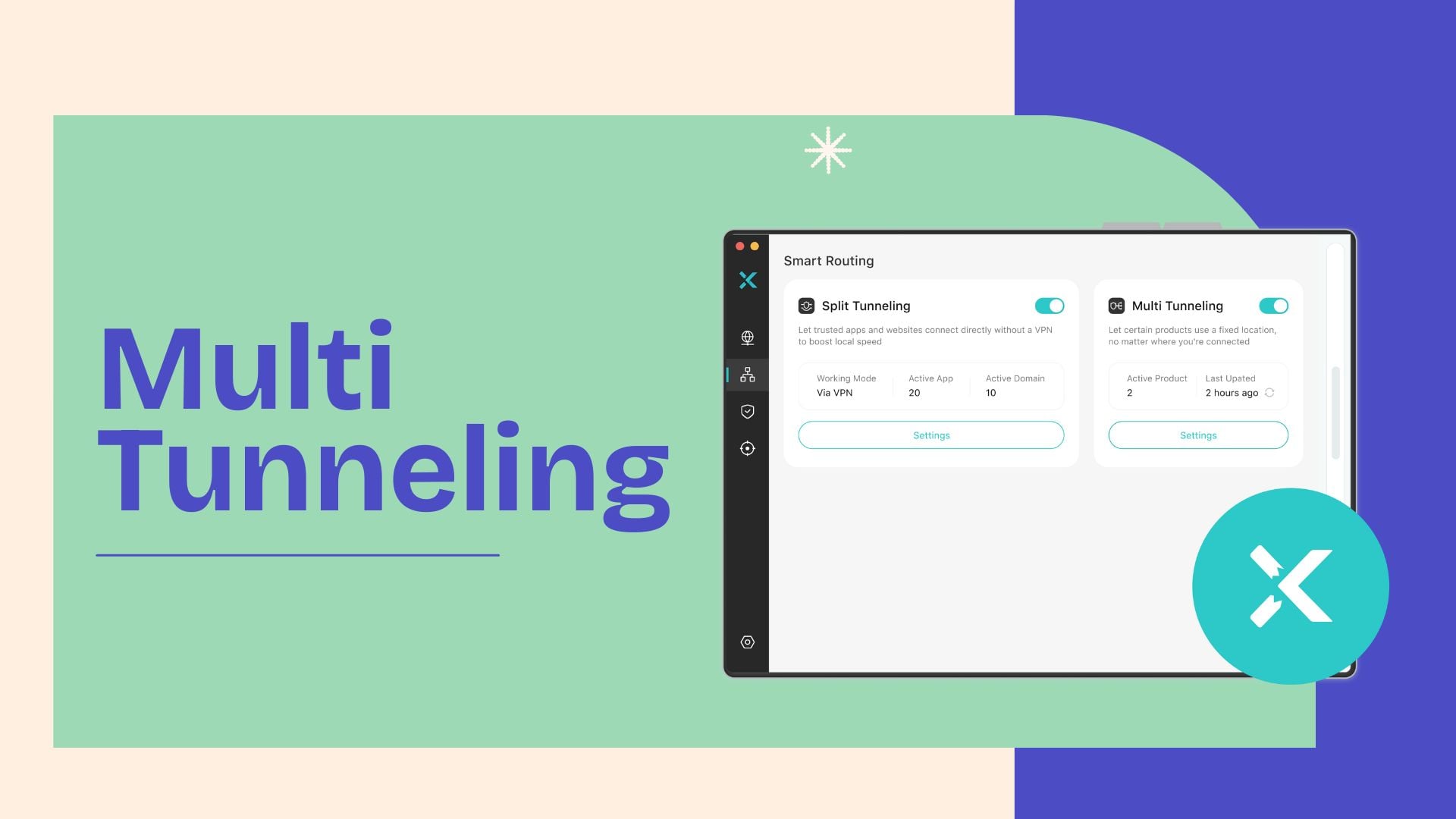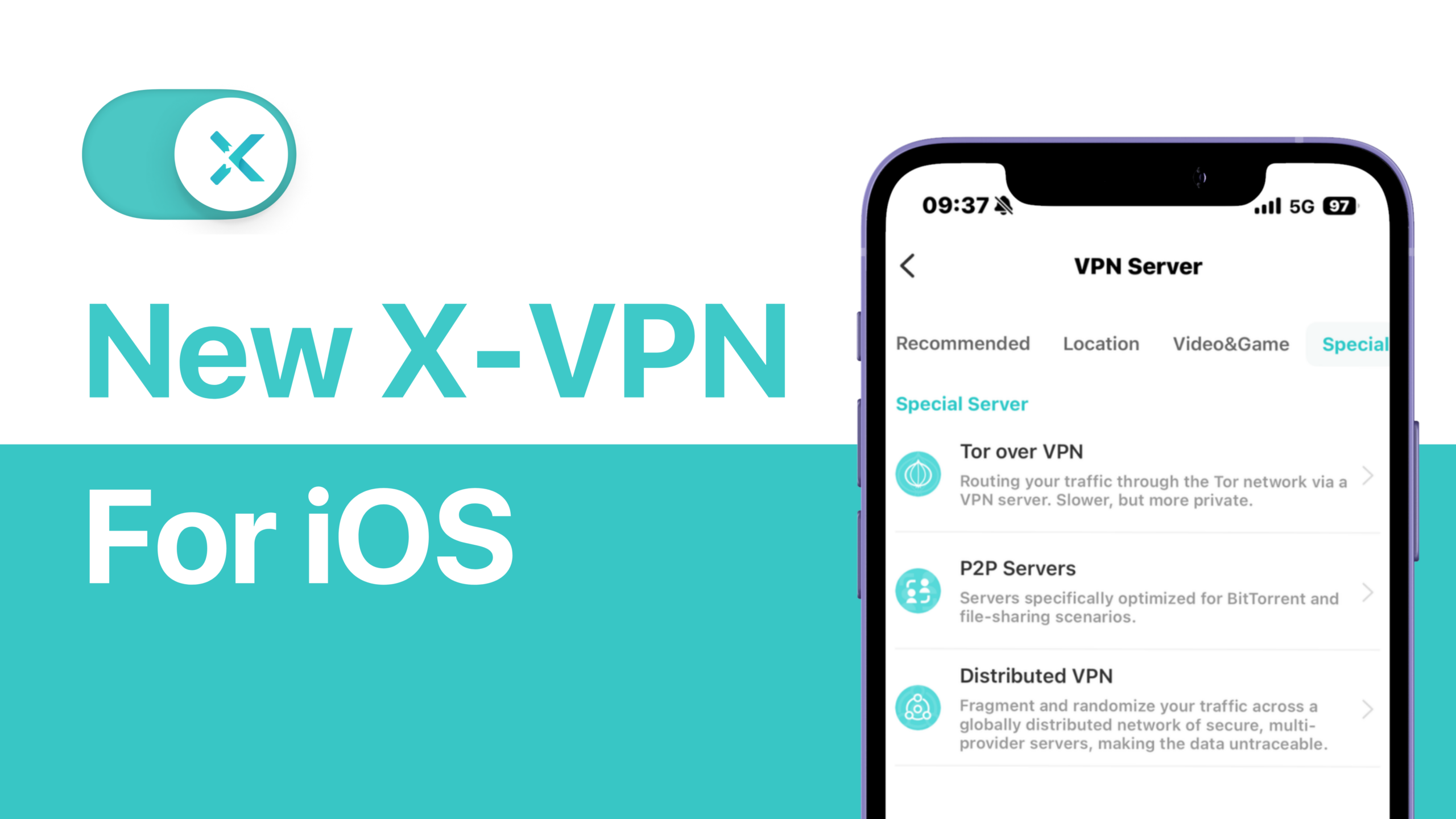
You can turn off VPN on Android directly within its app, tap the VPN icon in the status bar to disconnect, or disable it through System Settings. Running into trouble along the way? Don’t worry, follow this tutorial with clear steps and screenshots, manage your VPN connection on Android efficiently.
Table of Contents
How to Disable VPN on Android Within the App?
Turning off VPN on Android directly within a VPN app can be quite simple. The connect/disconnect button usually occupies a large space right on the Home screen, and you can tap it to turn it off. Take X-VPN as an example, for it offers a straightforward user interface across devices.
📖 Tutorial with Screenshots
Step 1. Open X-VPN app on your Android phone.
Step 2. Tap the big green connect icon in the center of the home screen.
Step 3. Waiting for the green circle turns gray, and you’ll see “VPN is OFF” displayed above the icon.

🔧 Troubleshooting Common Issues
1. Disconnect Button Unresponsive
How to disable VPN when the disconnect button of the app is unresponsive? It might occur when an app freezes or crashes. Try these steps in order:
- Force close the VPN app and reopen it.
- Restart your Android device.
- Uninstall the VPN app to thoroughly disconnect.
2. Traffic Still Routes Through VPN After App Disconnection
If the app shows “Disconnected” but your internet traffic still appears to go through the VPN:
- First, check whether your Wi-Fi router is VPN configured and disconnect the Wi-Fi to disable Android VPN traffic if yes.
- Check for and delete manually configured profiles on Settings > Network & Internet> VPN. It could either be from a different app or one manually configured in settings.
- Uninstall the VPN app if the 2 steps above don’t resolve the connection. Always pick a professional VPN that is easy to turn on/off and never crashes.
How to Turn Off VPN on Android Through Status Bar?
Another way to quickly turn off VPN on an Android phone is to tap the icon on the Status Bar(Quick Settings). Different Android brands require different levels of configuration to add the VPN to Quick Settings. Here’s a table of how mainstream Android brands do it.
Android Brands | VPN & Quick Settings |
|---|---|
Samsung | Auto-pinned after first connect, always stays in the status bar even after disconnect. |
Google Pixel | Auto-pinned after first connect, disappears when you turn it off. |
Motorola | Auto-pinned after first connect, disappears when you turn it off. |
OnePlus | Auto shows up after first connect, long press to pin it in your status bar, or it will disappear when you disconnect. |
Xiaomi | Manually add it to the status bar and it will remain in here until you manually remove it. |
After figuring out how your phone brand works, how do I turn off VPN on Android then? Here we take X-VPN on a Xiaomi phone as an example.
📖 Tutorial with Screenshots
Step 1. After installing X-VPN on your phone, pull down the status bar.
Step 2. Tap the “Edit” button, find the X-VPN icon, tap the green “+” on it, then confirm with the checkmark (✓).

Step 3. When connected, the status bar icon turns green; simply tap it to open the app and disconnect.

Always note that behavior varies significantly across brands. Samsung, Google Pixel, and OnePlus devices allow immediate VPN disconnection with one tap on the Quick Settings icon, while Motorola and Xiaomi redirect you to the app instead. These differences stem from system-level design variations in manufacturers’ Android implementations.
🔧 Troubleshooting Common Issues
1. Can’t Find the VPN Icon on Quick Settings
For many Android brands like the Google Pixel, Motorola, and OnePlus, the VPN icon only exists when you are connecting to the VPN, and will not show up when you are not connecting.
How to Turn VPN Off on Android in Settings?
Since Android allows manual VPN setup directly in system Settings even without a VPN app installed, you can also disable VPN connections there. Note that menu paths may vary across device brands.
📖 Tutorial with Screenshots
Step 1. Open “Setting” > “VPN”.
Step 2. Toggle the VPN slider off.

🔧 Troubleshooting Common Issues
1. Can’t Find VPN Settings
Android phones have VPN settings in different places. Here’s where to find them on popular Android phones.
- Samsung: “Setting” > “Connections” > “More connection settings” > “VPN”
- Google Pixel & Motorola: “Setting” > “Network & internet” > “VPN”
- OnePlus: “Setting” > “WLAN & internet” > “VPN”
- Xiaomi: “Setting” > “VPN”
2. VPN Toggle Slider Springs Back Instantly
The VPN toggle slider will automatically pop back when “Always-on VPN” is enabled in your system settings. To resolve this, you need to tap on each VPN you added here and disable “Always-on VPN”, then go back to the VPN settings to turn it off.

Why Would You Turn Android VPN Off?
While VPN brings both security and convenience, there are some conflicts between enabling VPN features and enjoying unobstructed networks. Here are some frequent cases prompting users to disable VPNs.
1. Sites Fail to Load
Many people choose to disconnect from a VPN when sites keep loading or fail to load. While in most cases, the VPN connection is not the blame, and it’s vital for safe browsing as well.
2. Run Into A VPN Detection
Many platforms and services will detect whether visitors are using a VPN. When they find a VPN connection, you’ll probably be blocked from visiting their services.
A typical example of VPN detection is from banking services. They’ll check your login and payment environment, including but not limited to unusual login attempts, suspicious IP addresses, and unusual activities.
Another common case happens on streaming services. When people try to cheat the system to pretend to be in another location to access certain content, streaming services tend to detect and block user visits.
Please use a VPN in compliance with the related terms of regulations. We do not advocate VPN abuse.
3. Travel to A VPN Restricted Area
Many countries still ban the use of VPNs. When traveling to these locations, you’ll need to disable your VPN to comply with local laws. When bringing yourself with multiple devices, check out the following guides to learn how to disable your VPN on those devices as well.
▶ How to Turn Off VPN on iPhone
▶ How to Turn Off VPN on Windows
4. Encountered A Significant Speed Drop
VPN connections can cause slowdowns or unstable connections, especially with lower-quality VPN services. Users often disconnect from their VPN when engaging in heavy online activities, such as online gaming or streaming.
5. Restricted to Access Your Local Content
Many local services, like live football matches, region-restricted videos, and even discounted local prices, are exclusive to locals. Using a VPN will make it look like you’re accessing from somewhere else, thus losing your access privileges.
Alternatives to Turning VPN Off
However, fully disconnecting from VPN will expose your traffic to ISPs, online hackers, and many other untrusted parties. Before taking that risk, explore these alternative methods that maintain your security while resolving your dilemma.
1. Opt for a Trusted VPN Service Provider
The above situations force people to disable their VPN connections, even at the sacrifice of online security. However, you don’t need to. Professional VPN service providers can resolve most issues for you. For example, X-VPN is one of the most trustworthy VPN service providers that actively helps solve your issues instead of waiting to be solved.
100% Free to Use
Optimized Fast VPN Connection Speeds
Special “Stable Connection” Feature

2. Switch VPN Protocols
When experiencing a speed drop, switching protocols can sometimes be a better solution than disabling your VPN. For example, switch from a heavier protocol like OpenVPN to a leaner one like WireGuard or IKEv2. Modern protocols reduce encryption overhead and are ideal for streaming or large downloads.
3. VPN Split Tunneling
You can activate split tunneling to better balance encryption and speed. For example, allowing only personal sensitive apps to use VPN data while leaving the gaming options unencrypted for maximum speed. X-VPN even supports both application-level and URL-based rules, allowing you to precisely control which traffic is protected.
Conclusion
This guide shows how to turn off VPN on Android phone in 3 simple ways, after which you can avoid issues like speed drops and unstable connections. However, with a professional service like X-VPN, these disconnection triggers no longer apply. Stop struggling with disabling steps, experience Android security with the best free VPN that works for you.
FAQs
How to Add VPN to Quick Settings on Android?
Most Android phones add your working VPN to Quick Settings automatically and disappear when you disconnect. For brands that don’t, you can add it by pulling down the status bar, tapping the Edit button, and dragging your VPN to the active panel.
How to Tell Whether I’ve Disabled My VPN on Android?
You can check whether you’ve successfully disabled your VPN on Android through the following 3 methods:
• IP Check: Search directly online to see whether your current IP matches your actual location.
• System Settings: Go to your System Settings and find the VPN settings. Check whether the toggle shows “Off”.
• Status Bar: To see whether the VPN icon disappears or turns gray.
Do I Need to Restart My Phone After Turning VPN Off?
Not necessary. VPN connections terminate immediately when disabled. Only restart if you tried everything but still failed to disconnect from the VPN network.




